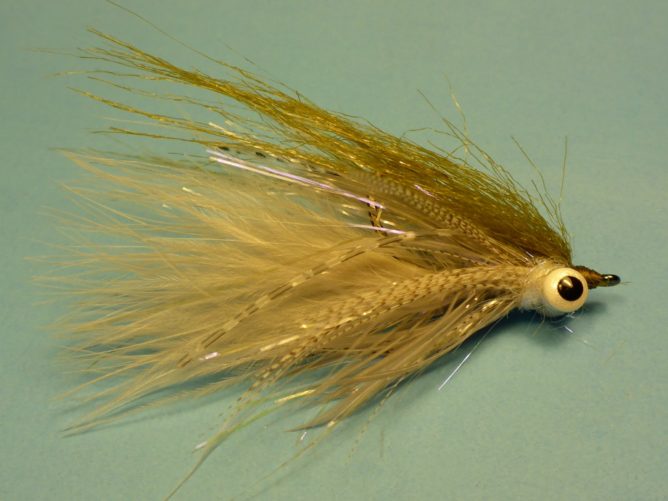 The Skam-Man streamer pattern represents a number of bait and juvenile sport-fish found in a number of different waters, serving as biomass/food for larger fish.
The Skam-Man streamer pattern represents a number of bait and juvenile sport-fish found in a number of different waters, serving as biomass/food for larger fish.
While it was named after and originally designed to imitate the natural reproduction progeny of the Skamania strain of steelhead on the Manistee River, this fly does a good job of suggesting more, including: shiners, juvenile rainbow trout and even shad (where they are present).
This fly is quick to tie, offers a great jig-like action and fishes well for trout and bass – both in rivers and lakes.
In Michigan Rivers, the Skam-Man has fished well in the spring, summer and fall – but like most patterns, some days it’s not what the fish are looking for. Coho salmon and steelhead have also eaten the Skam Man, so consider it a versatile pattern worthy of a place in your fly box and to be fished on Michigan waters as well as in other regions.
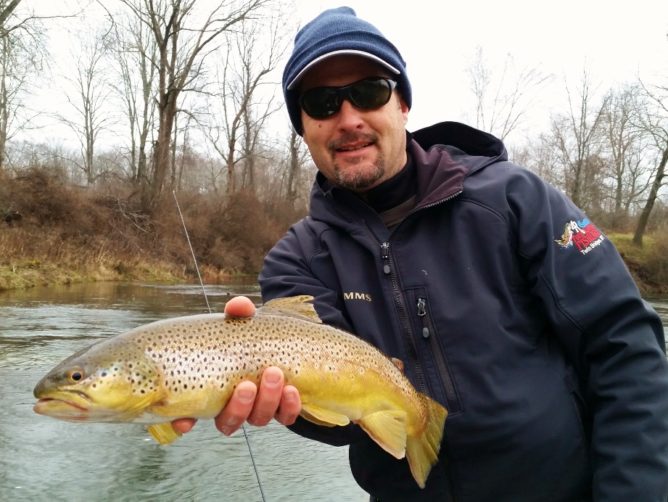 Anglers can fish this streamer pattern either on a sink-tip or floating line depending on the water depth, temperature and flow rate. Be sure to cast to the center of the river as well as the inside bends as often that is where feed fish often lie. Don’t forget to mix up the retrieve to find out what the fish want that day but start with a quick strip and pause retrieve with some rod tip-flick to speed it up but also provide a pause as it drops.
Anglers can fish this streamer pattern either on a sink-tip or floating line depending on the water depth, temperature and flow rate. Be sure to cast to the center of the river as well as the inside bends as often that is where feed fish often lie. Don’t forget to mix up the retrieve to find out what the fish want that day but start with a quick strip and pause retrieve with some rod tip-flick to speed it up but also provide a pause as it drops.
Recipe
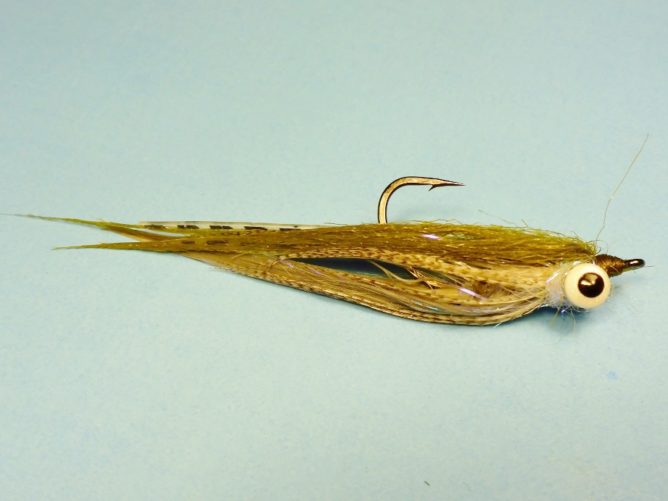 Hook: Gamakatsu B10S – #4
Hook: Gamakatsu B10S – #4
Thread: Uni 6/0 Olive Dun
Eyes: Lead Dumbbell – Pearl X-Small
Tail: Marabou – Pearl Gray
Body I: UV Polar Chenille UV Pearl
Body II: Schlappen – Gray
Collar: Mallard Flank Feather
Legs: Sili Legs – Clear Barred
Wing: Craft Fur – Golden Olive
Dubbing: Ice Dub – Minnow Belly
Tying Instructions:
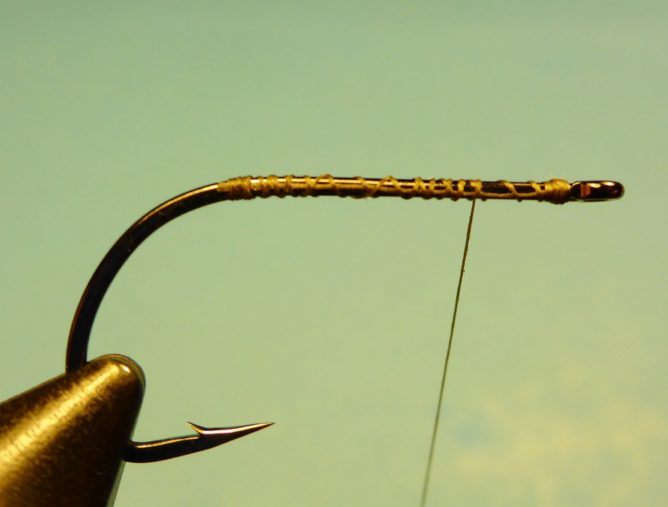 Step 1. Wrap a thread base from behind hook eye to above hook point and back towards the eye.
Step 1. Wrap a thread base from behind hook eye to above hook point and back towards the eye.
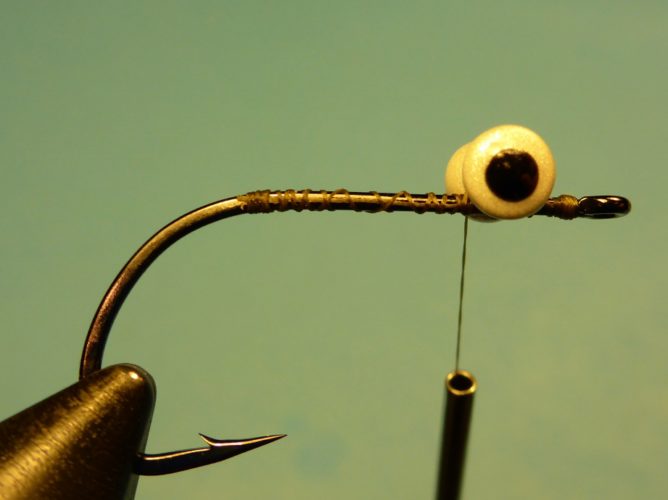 Step 2. Using figure-8 wraps, tie the lead eyes on top of the hook. Using the photo as reference, they should
Step 2. Using figure-8 wraps, tie the lead eyes on top of the hook. Using the photo as reference, they should
be tied so there is a space between the hook eye and the dumbbell eyes the size of the eyes themselves.
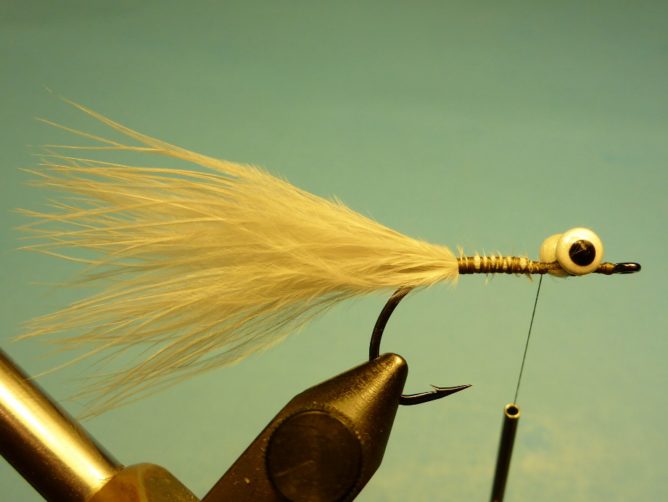 Step 3. Tie in a sparse amount of marabou for the tail that extends beyond the hook
Step 3. Tie in a sparse amount of marabou for the tail that extends beyond the hook
the length of the hook itself. Sometimes you need to cut off the very tip and/or base of the feather.
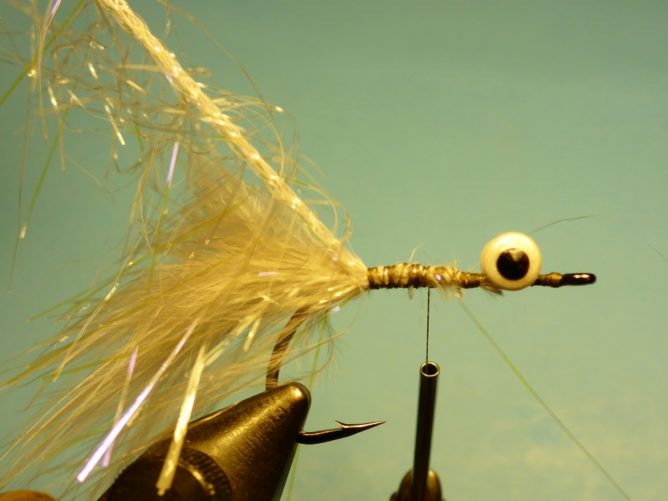 Step 4. Tie in a strand of Polar Chenille.
Step 4. Tie in a strand of Polar Chenille.
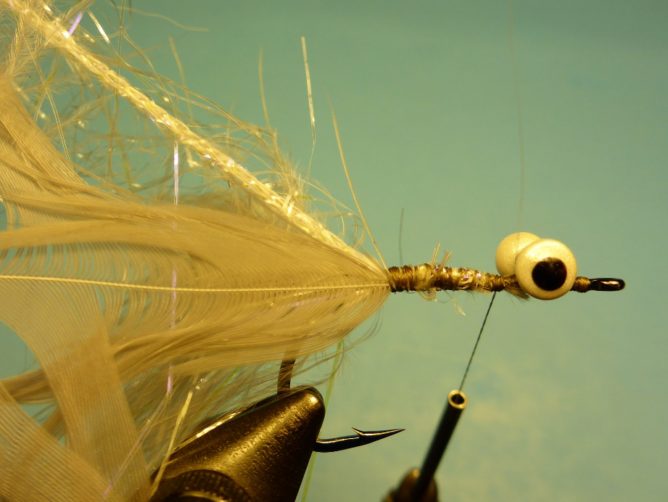 Step 5. Tie in a schlappen feather by the tip.
Step 5. Tie in a schlappen feather by the tip.
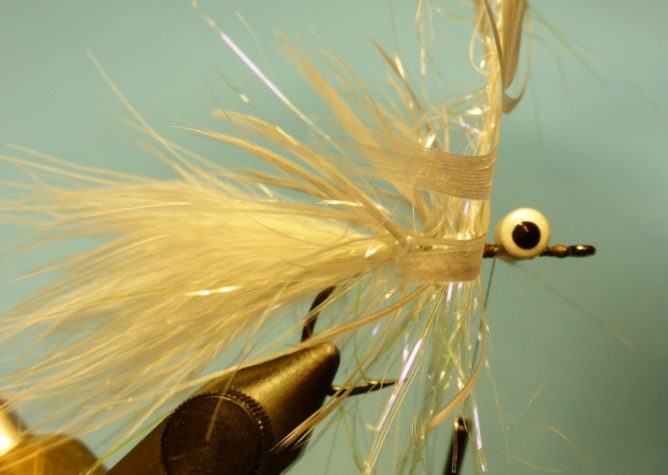 Step 6. At the same time wind both the Polar Chenille and schlappen stopping just short of the lead eyes.
Step 6. At the same time wind both the Polar Chenille and schlappen stopping just short of the lead eyes.
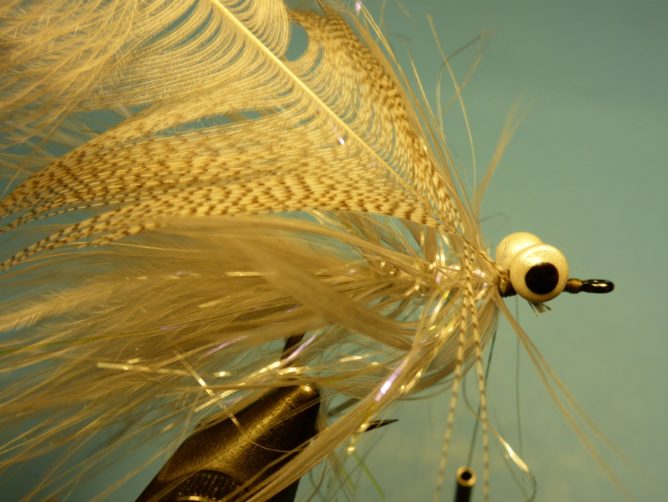
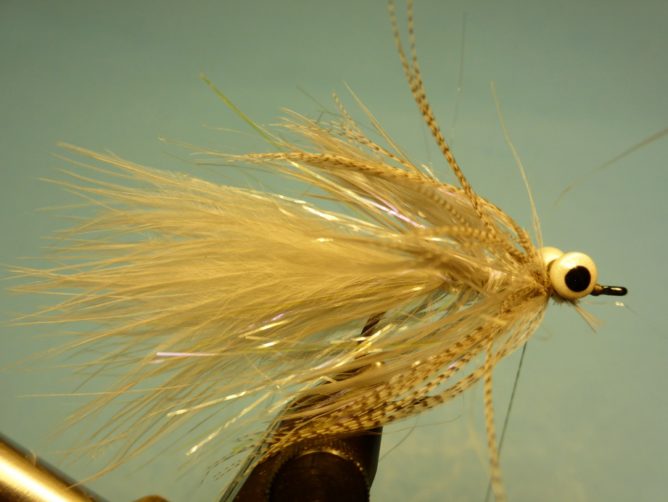
Step 7. Take a flank feather and tie it in by the tip. Hold stem of the feather up and run the edge
of your scissors along the stem to “break” the fibers which can now be folded backwards.
Fold and wind the feather once to get full coverage and trim excess.
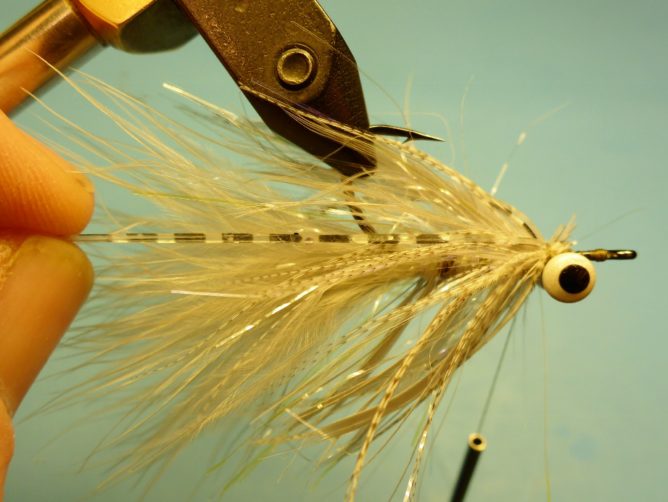 Step 8. Tie in a rubber leg on each side of the fly so it extends the length of the fly.
Step 8. Tie in a rubber leg on each side of the fly so it extends the length of the fly.
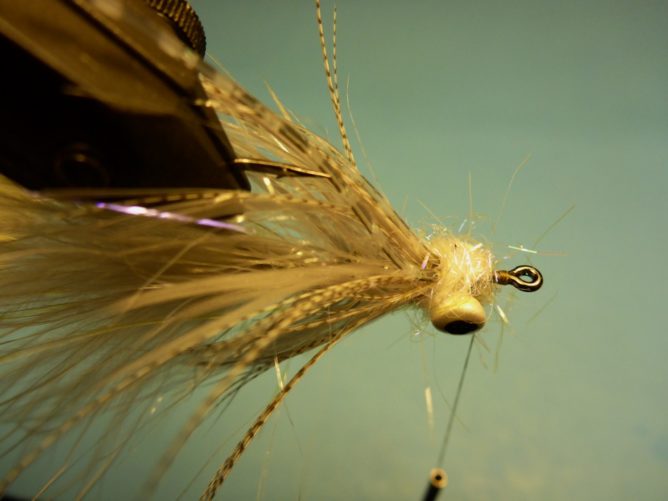 Step 9. Dub the space between the body and around eyes to form a smooth body profile.
Step 9. Dub the space between the body and around eyes to form a smooth body profile.
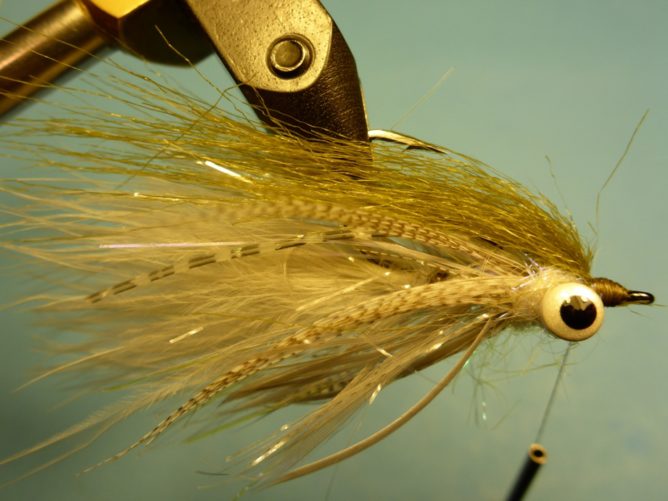 Step 10. Rotate vise or put the fly in vise upside down. Tie in wing so that it extends just
Step 10. Rotate vise or put the fly in vise upside down. Tie in wing so that it extends just
short of the tail material. Tie off with a whip finish and coat with a water-based head cement.
